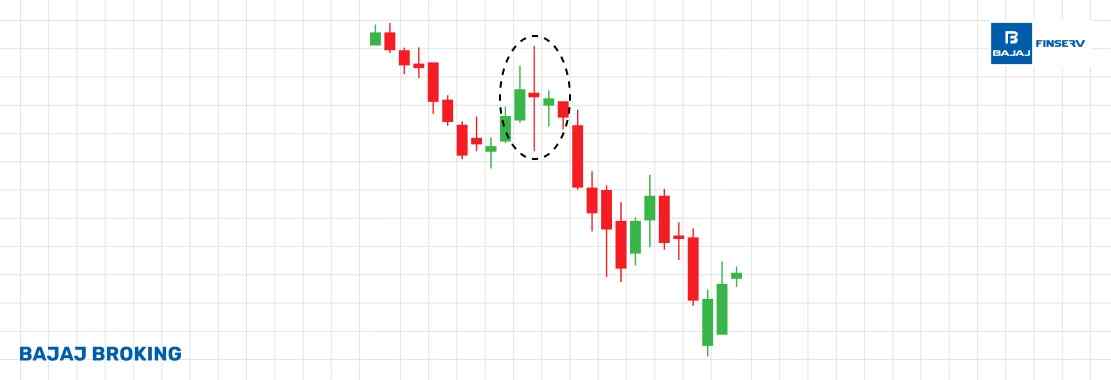Candlestick patterns play a fundamental role in technical stock analysis and analysis of other investments. They allow traders to assess the quality of price actions and determine trends by means of easily identifiable patterns. Of such patterns, the Doji candlestick is a special formation that commonly appears on charts. This is a pattern where the opening and closing prices of the asset are almost equal. As a result, it has almost a zero or non-existent body with long shadows or wicks to accompany it.
The Doji is a pattern indicating equilibrium between buyers and sellers, as a sign of indecision on the part of the market. When it shows up, it might signal potential reversals or continuation of trends depending on the action leading to it and the kind of Doji that showed up. But let us first address the fundamentals of candlestick patterns and how the Doji formation plays a part in stock analysis.
Overview of Candlestick Patterns
Candlestick patterns reflect price movement in the financial markets. They originated among Japanese rice traders in the 17th century. Each candlestick gives a clear signal of the movement of the price of an asset over a specific period of time. It reflects the opening price, closing price, high price, and low price. The body of the candlestick reflects the difference between the opening and closing prices. The shadows (or wicks) reflect the high and low prices. Monitoring these patterns helps traders to spot possible market trends, reversals, and continuations, which help them make good decisions. Now that we know doji candle meaning, let's move on to its different types.
Different Types of Doji Candlestick Patterns
There are several variations of the Doji candlestick pattern, each with distinct characteristics and implications:
Gravestone Doji
The Gravestone Doji is when the opening, closing, and low are extremely close, with a very long upper shadow. This is an indication that the buyers pushed the price up for the day, only to have the selling force retract the price to the opening point at the close, which is an indication of a potential bearish reversal.
Dragonfly Doji
The Dragonfly Doji is when the opening, high, and close are near each other, but the lower shadow is longer. This pattern indicates the sellers are driving the prices lower at the beginning, but the buyers take control soon and bring the price back to the opening point, which can be a bullish reversal sign.
Long-Legged Doji
The Long-Legged Doji features long upper and lower shadows with the opening and closing prices near the middle of the candlestick. The pattern indicates that there was strong indecision in the market because prices moved strongly in both directions but ended up near the opening price.
4-Price Doji
The 4-Price Doji is an extremely rare occurrence where the close, open, high, and low all come together at one point and form one horizontal line with no shadows. This structure is a signal of complete lack of volatility and indicates complete uncertainty in the marketplace.
Doji Star
Doji Star occurs when a Doji is preceded by a long candlestick, creating a gap between the two. Its interpretation relies on the prior trend and the color of the leading candlestick, as it may indicate a potential reversal. For example, following a large bull candlestick, a Doji Star may signal that the buying trend is weakening, indicating a potential bearish reversal.
Additional Read: Technical Analysis Guide
Steps to Interpret a Doji Candle
Interpreting a Doji candlestick involves analyzing its context within the broader market trend and considering the following steps:
Identify the Doji: The most important trait of a doji is almost identical opening and closing prices. Look for sticks where the opening and closing prices are equal or nearly equal which results in the candlestick having a small or non-existent body.
Assess the Preceding Trend: It’s important to look at the previously existing trend in the market. Whether the market is in an uptrend, downtrend, or sideways movement prior to the formation of the Doji.
Consider the Doji Type: Once you have established the Doji’s presence, then focus on the type of Doji you are looking at. The type of Doji has its own implications and identifying the type is key to understanding the pattern properly.
Analyze Volume: High trading volume accompanying a Doji can strengthen its significance as a potential reversal signal.
Seek Confirmation: Confirming your call is also a must. Once you have recognised the Doji and its type, focus on the subsequent candlesticks. Seeing a bearish candlestick following the Doji can be considered a confirmation that you have indeed found a Doji Candlestick Pattern.
Use Complementary Indicators: In addition to looking for confirmation in the subsequent candlesticks, you could also make use of other technical analysis tools in compliment to the candlestick. For instance, moving averages, or relative strength index can be useful for this process.
By following these steps, traders can effectively interpret Doji candlestick patterns and make informed decisions based on market sentiment.
Doji Candlestick vs. Spinning Top
While both the Doji and Spinning Top candlestick patterns convey a feeling of indecision in the market, the two patterns each possess distinct traits to their shape. The Doji possesses an extremely small or nonexistent body since the opening and closing prices are virtually identical. A Spinning Top possesses a small body with equally sized upper and lower shadows. This pattern indicates a struggle for control between buyers and sellers but a weaker feeling of indecision than with the Doji.
Final Thoughts
The Doji candlestick pattern is a valuable technical analysis tool. It provides indications of how the traders perceive things and potential shifts in market trends. One should, however, consider the Doji in the overall market context and in conjunction with other technical indicators in order to make smart trading decisions. Through knowledge of the various types of Doji patterns and their implications, the traders can enhance their ability to forecast market changes and adjust their strategies accordingly.
Do you have a trading account app or demat account app?
You can open an account with Bajaj Broking in minutes.
Download the Bajaj Broking app now from Play Store or App Store.
Disclaimer: Investments in the securities market are subject to market risk, read all related documents carefully before investing.
This content is for educational purposes only. Securities quoted are exemplary and not recommendatory.
For All Disclaimers Click Here: https://www.bajajbroking.in/disclaimer












